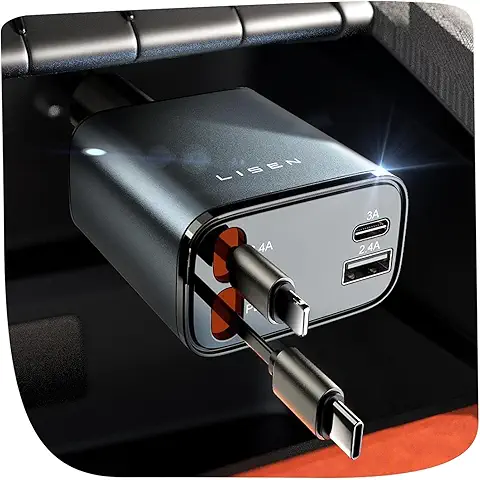Best Travel Tips to Help You Maximize Your Adventures Around the Globe: A Complete 2025 Guide


Traveling is one of life’s great teachers. New countries, unfamiliar flavors, and genuine cultural exchanges can broaden perspectives in ways that linger long after you’ve unpacked. But maximizing the joy, and minimizing the friction takes more than a passport and a packing cube. In today’s fast-moving world, successful trips are built on thoughtful prep, real-time adaptability, cultural intelligence, and a practical commitment to health, safety, and sustainability.
Whether you’re planning your first international getaway or refining your well-worn routine, this modern guide pulls together the strategies, tools, and trends that matter in 2025. You’ll find up-to-date, human-friendly advice built to satisfy both travelers and searchers: clear headings, evergreen tips, and depth that earns trust (and indexing). Let’s turn your next trip into your best one before you even step on the plane.
1) Pre-Travel Foundations: Research That Actually Improves Your Trip
Great trips begin at the planning table. Start by going deeper than a few blog posts or TikTok. Learn the story behind the destination: its historical context, regional diversity, languages or dialects, local etiquette, and any recent developments that could shape your experience. Scan official tourism sites and government advisories for entry rules, local laws, and seasonal realities. A country might be perfectly safe overall but have regions with heavy rains in certain months, limited infrastructure, or major festivals that transform hotel availability and transit patterns.
Aim for an itinerary with structure and elasticity. It’s wise to anchor your trip around a few non-negotiables, perhaps a festival, a hike you’ve always wanted to do, or a museum that closes some days of the week. Then leave gaps. Flex days allow you to act on a local’s recommendation or shift plans when weather, transit strikes, or unexpected closures pop up. Seasoned travelers often plan less but experience more because they’ve left space for discovery.
Documentation needs the same care. Keep your passport, visas, vaccination records, prescriptions, and travel insurance details in a single, well-organized folder both physically and digitally. Save digital copies in secure cloud storage and share a “just in case” folder with a trusted person back home. If something goes missing, you’ll be grateful you can retrieve a copy in seconds.
Packing is a strategy, not a sprint. Choose versatile layers in a tight color palette so everything mixes and matches. Bring footwear that fits the activities you actually plan to do, not the ones you imagine you might do once. Add a compact first-aid kit, a refillable water bottle, a universal adapter, and a small power bank. You’ll feel freer with less in your bag, and freedom is the entire point.
2) Money and Bookings: Smarter Choices, Fewer Surprises
Prices change constantly, and small choices early on ripple through your entire budget. For flights, monitor fares before purchase and be flexible when you can, mid-week departures or shoulder-season travel often deliver better value. Consider alternative airports if they don’t introduce a logistical headache; sometimes a nearby secondary airport has faster security and cheaper ground transfers.
When paying abroad, prioritize credit cards with no foreign transaction fees and widely accepted networks. If your destination is still cash-centric, plan ATM withdrawals strategically to minimize fees rather than arriving with a wad of expensive airport-exchange currency. Notify your bank before departure to avoid fraud flags. In places where cash is still king (certain markets or taxis), keep small denominations separated from your main card wallet so you can pay quickly without flashing everything you’re carrying.
Always compare accommodation total costs; nightly rate, taxes, resort or cleaning fees across a couple of platforms and the hotel’s direct channel. Direct bookings can unlock fee-free changes, loyalty points, or perks like breakfast or late checkout. On vacation rentals, read the most recent reviews carefully for noise, Wi-Fi reliability (vital for hybrid work trips), and neighborhood safety after dark.
Finally, buy travel insurance that fits your trip, not someone else’s. A city-break weekend needs different coverage than a backcountry trekking adventure. Read the exclusions, understand how to file a claim, and keep receipts and incident documentation organized as you go. Treat insurance like a seatbelt: you hope to never need it, but it’s invaluable when you do.

3) Getting There and Around: Transportation Without the Headaches
Air travel is often the costliest and least flexible piece of the puzzle, so lock that first, then shape the rest. Consider adding a long layover in a city you’re curious about, an “accidental mini-trip” that can make the journey part of the destination. When you arrive, resist the default of pricey airport taxis unless you truly need them. Airport trains, shuttles, and buses are designed for travelers with luggage and are usually well-signed; they’ll deliver you to central hubs where you can switch to local transport or walk.
Public transportation is usually the most budget-friendly and immersive way to traverse a new city. Download local transit apps or maps before you land and skim the basics of how tickets are purchased and validated, rules vary widely between countries and even between metro systems in the same country. In cities with bike-share or scooters, check whether helmets are rentable or bring a packable one of your own. If you do rent a car, research the real driving norms: roundabouts, right-of-way rules, toll transponders, environmental stickers, and low-emission zones can surprise even experienced drivers.
Pedestrian safety is context-dependent. In some places, crosswalks are sacrosanct; in others, they’re more like suggestions. Watch what locals do for a day before assuming you understand how traffic flows. If you need a rideshare at night, order from a well-lit spot and confirm the license plate, driver photo, and app match before you get in.
4) Where You Stay: Comfort, Safety, and a Sense of Place
Choice of stay shapes the trip’s rhythm. Boutique hotels can embed you in a neighborhood with staff who know the area intimately. Hostels now range from backpacker basics to design-forward spaces with private rooms and quiet work corners for digital nomads. Vacation rentals shine for families or longer stays, but ensure the accommodation is legally licensed and respectful of local housing needs.
Location beats almost everything. Being a ten-minute walk from a major transit line, a grocery store, and an evening stroll street often matters more than an extra on-site amenity you’ll never use. Upon check-in, do a quick safety scan: find the exits, test the door and safe, note the local emergency number, and ask staff for up-to-date advice on areas to avoid late at night. If you’re solo, share your accommodation details and first-night plan with someone you trust.
Sustainability credentials are increasingly clear. Look for properties that disclose energy and water practices, source local food, reduce single-use plastics, and support community initiatives. When hotels invest in place, your stay supports more than a bed.
5) Cultural Immersion: Travel as a Conversation, Not a Performance
Learn a few words of the local language before you arrive, even if everyone “speaks English.” A genuine hello, please, thank you, and excuse me opens doors that translation apps can’t. When dining, ask for regional dishes rather than defaulting to international standards, culinary traditions are often the quickest path to meaningful exchange. Street food is authentic in many cities; just follow the crowd, choose stands with brisk turnover, and watch how food is handled.
Dress codes and social expectations vary widely. Aim to be a respectful guest, not the exception. Read cues about when to remove shoes, cover shoulders, or lower your voice. In sacred spaces, photography etiquette deserves extra care; put the camera down if it distracts from what the place is for. Remember that you are not only seeing a destination, you’re participating in it, however briefly.

6) Health and Safety in 2025: Proactive, Not Fearful
Your health is the foundation of every memory you hope to make. Before long trips or visits to regions with specific risks, consider a pre-travel consultation with a qualified clinician, ideally 4–6 weeks before departure so you have time for recommended vaccinations or medications. Ask about routine boosters you might have missed, destination-specific risks (from altitude to insects), and practical prevention strategies. If you take daily medications, pack more than you need and split supplies between your carry-on and personal item.
Hydration, sleep, and food hygiene remain the unsung heroes of good travel. Carry a collapsible bottle, ease into rich foods if your stomach is sensitive, and pace yourself on arrival to fight jet lag. Research how to access urgent care where you’re going and how your insurance handles direct billing versus reimbursement. Save a local list of clinics and pharmacies, plus your blood type and any allergies, in a phone note that’s accessible offline.
Security is mostly about habits. Keep valuables out of sight, use hotel safes for passports, and trust your instincts if a street, bar, or situation feels off. Common scams evolve but share patterns: rushed decisions, unusual payment requests, and too-good-to-be-true offers. Slow down and verify. Digital safety matters too, avoid logging into sensitive accounts on public Wi-Fi without a VPN, and use device passcodes or biometric locks.
7) Your 2025 Tech Toolkit: Helpful, Not Hectic
Technology should smooth the journey, not steal the show. eSIMs are now widely supported and let you land connected without hunting for a kiosk; buy a plan from a reputable provider, add it to your phone before departure, and switch data on after you clear the jet bridge. Download offline maps for cities and trail areas, then star your hotel, a late-night pharmacy, and a couple of safe meet-up points in case your group separates.
A lightweight power bank and a fast dual-port charger will save you more often than an extra pair of shoes. Translation tools keep getting better, but always start with a human hello; it changes the tone of your conversation. For planning, consider a simple master itinerary app to centralize flight times, booking references, and entry rules. And yes, AI trip assistants are genuinely useful in 2025 for neighborhood suggestions, live re-routing during delays, and finding alternatives when a museum closes early or a storm washes out a ferry.
8) Travel That Gives Back: Sustainability and Ethics, Practically Applied
Responsible travel scales from small choices to bigger commitments. Start where you are. Pack a reusable tote and bottle. Choose tours that cap group sizes and hire local guides who are fairly paid. In fragile environments, stick to established paths even a few footsteps off-trail can damage delicate flora for years. Treat wildlife with respect; if an activity requires baiting, touching, or riding wild animals, skip it. Your money is a vote for the kind of tourism you want to exist.
Over-tourism is real in some hotspots, especially at certain hours. You can help by traveling in the shoulder season, visiting early or late in the day, spending time in less-visited neighborhoods, and seeking out “destination dupes” that offer similar magic with fewer crowds. When you redirect your itinerary, your presence supports a broader local economy instead of intensifying pressure in one square mile everyone already knows.
9) 2025 Trend Watch: How Travelers Are Actually Traveling Now
The way people travel continues to evolve, blending work, wellness, and a sharper sense of impact.
Hybrid work vacations are mainstream. Many travelers tack on office days at the start or end of trips, choosing stays with reliable Wi-Fi and quiet common areas. If that’s you, book accommodations that advertise actual upload speeds and offer desks or coworking partnerships. Build your sightseeing around work blocks; the hours before 10 a.m. and after 4 p.m. can reveal a destination at its most local.
Destination dupes let you experience the essence of a famous spot without the strain. If you love Prague’s cobblestones, try Tbilisi’s hilltop views and sulfur baths. If Iceland’s drama calls to you, the Faroe Islands serve up sweeping cliffs and fog-wrapped villages with far fewer tour buses. Valencia swaps Barcelona’s crowds for a laid-back Mediterranean rhythm, bike-friendly boulevards, and futuristic architecture in the City of Arts and Sciences. Kotor, with its fjord-like bay and Venetian walls, offers Dubrovnik vibes at a gentler tempo.
Slow travel is rising. Travelers are choosing fewer bases and deeper dives, often staying long enough to learn neighborhood names, market patterns, and the exact time the light turns honey-gold on a particular street. Slow travel cuts transit costs and emissions while amplifying connection, exactly what most of us are craving after years of fast, fragmented living.
Wellness and nature keep pulling people outdoors. From forest bathing in Hokkaido to cliff walks above Lagos, trips designed around movement, open air, and restorative rituals are trending across age groups. Meanwhile, multigenerational travel continues to grow, with itineraries that balance museum hours with playground breaks, and city days with pool afternoons or easy coastal hikes.
10) Where to Go Next: Emerging, Underrated, and Worth-the-Trip
Cape Verde (Sal Island) blends breezy beaches with Creole culture and consistent sunshine. It’s an excellent winter-escape option with a growing hotel scene and laid-back towns where live music pours out of small bars at night. Pack for sea breezes and long beach walks, and don’t rush, the tempo here is the point.
Tbilisi, Georgia charms with wooden balconies, winding lanes, and a food scene that seems to reinvent itself every season while remaining deeply Georgian at heart. Soak at a historic bathhouse, take the cable car for city views, and day-trip to monasteries that feel carved out of hillsides. Wine lovers, you’re in a birthplace of winemaking; qvevri tastings will reset your palate.
Hokkaido, Japan is a revelation beyond winter. Sure, powder hounds already know. But summer and fall brim with flower fields, lakeside cycling, and onsen villages wrapped in steam and pine. Base in Sapporo for urban ease, then push out to Biei and Furano for landscapes that feel hand-painted.
Lagos, Portugal delivers golden coves, dramatic cliffs, and a town that hums late into the night. It’s a stellar home base for coastal hikes along the Seven Hanging Valleys Trail, sea-cave kayaking, and day trips across the Algarve by train.
Looking for underrated? Try Palma, Mallorca for Gothic spires, hidden courtyards, and coves a short bus ride away. Or head to Kuala Lumpur, where hawker centers, temples, and modern skyline views are all a quick LRT hop apart. Salento, Italy trades Tuscany’s crowds for Puglian masserie, olive groves, and turquoise coves, while Montevideo, Uruguay blends rambla sunsets with a laid-back cultural scene that invites you to linger.
11) Planning Calendar: Timing, Visas, and Entry Rules
The best time to book depends on route and season, but a simple rule holds: start looking early, then pounce when the price dips to a level you’re happy with. For popular summer routes, earlier is usually better; for shoulder seasons, watch for spring and fall fare sales. If your dates are set in stone, set alerts; if you can be flexible, build your trip around the cheapest combination of days.
Entry rules evolve. Some destinations require e-authorizations, others a full visa, and some ask for onward tickets, proof of funds, or health documents. Read the official government site for your nationality and your destination, not just third-party summaries and check again before you go. Requirements can shift after you’ve booked.
12) Your First 24 Hours: Set the Tone, Find Your Rhythm
A calm first day pays dividends. Withdraw a small amount of local cash if needed, pick up your transit card or regional rail pass, and buy snacks and water for the room. Drop your bags and get outside sunlight and a walk help reset your body clock. Hydrate, eat something simple, and keep your first evening short; it’s better to wake up early and energized than to squeeze one more hour out of a foggy night.
If data matters, activate your eSIM before you leave the airport so your map works flawlessly. Star your accommodation, a late-night pharmacy, and a few key landmarks. If you’re traveling as a pair or group, agree on a backup meet-up spot in case phones die.
13) Packing, But Make It Practical
Think in systems: a small cube for sleep, one for daytime outfits, one for workouts or swims, and a flat pouch for chargers and adapters. Choose fabrics that dry quickly and resist wrinkles. Tuck in a lightweight scarf; it works as sun cover, temple-appropriate layer, airplane blanket, or picnic cloth. Shoes should cover your needs with just two or three pairs: one for long walks, one for nicer dinners or events, and, if necessary, one for the specialty activity you actually plan to do such as hiking, dancing, or beach days.
Toiletries should be as compact as your phone, solid shampoo or multi-use cleanser, decanted sunscreen, basic meds you know and trust. Remember that you can buy most things abroad; pack the essentials you can’t easily replace and let the rest go.
14) Contingencies: Weather, Delays, and Your Rights
Delays and disruptions are part of modern travel, but they’re less painful when you know the playbook. Build buffer time into connections, especially if a missed leg would strand you overnight. If things go sideways, stay calm and start parallel-solving: get in the customer-service line, open the app or website, and message the airline on social if that channel is faster. Be polite and specific about what you want: the next available flight, a reroute through a different hub, or a hotel voucher if you’ll be stuck.
Keep receipts when you have to cover costs temporarily. Some regions have passenger-rights frameworks for long delays or cancellations; others rely on airline policy. Either way, document what happened and follow up after your trip if needed. Don’t let a blip steal the rest of your experience.
15) 2025 Travel Trends, Integrated: Personalization, Sustainability, and Maximizing Time
Three big themes shape smart travel in 2025:
Personalization means designing trips around how you actually like to travel not how social media says you should. If museums drain you after an hour, plan shorter visits and longer café sits. If food is your compass, build each day around markets and a single standout meal. Tech helps here, but so does honesty about your energy and interests.
Sustainability is now a baseline expectation, not a niche. Choose trains over planes when practical, add a day or two instead of hopping every 24 hours, and support properties and operators who publish real sustainability actions, not just slogans. Responsible choices usually improve the trip for you and the people who call your destination home.
Maximizing experiences comes from unlocking hidden time: shoulder-season travel, early-morning starts at crowded sights, and strategic rest days that keep you present and curious instead of exhausted and reactive. The best trips feel full but not frantic.
16) Frequently Asked (Real) Questions
How far in advance should I book?
For peak summer or holiday travel, start monitoring months ahead and lock in when a fare hits your comfort point. For shoulder seasons, great deals can appear 6–10 weeks out. Use alerts, but don’t chase the absolute lowest tick you’ll spend more time than you save.
Do I still need travel insurance?
Yes. Medical emergencies abroad can be expensive, and cancellations happen. Match coverage to your plans, read the fine print, and keep documents handy.
Is public transportation safe?
In most cities, yes, especially in daylight and busy corridors. Keep your bag closed and front-facing in crowds, and learn the norms around ticket validation to avoid fines.
What about cash vs. cards?
Cards dominate in many places, but cash still matters for markets, small shops, and tipping in some regions. Withdraw locally at ATMs and avoid airport exchange counters unless there’s no alternative.
How do I balance work and travel on a hybrid trip?
Pick a quiet, well-located base with strong Wi-Fi, block your calendar for deep work, and build your sightseeing at the edges of your workday. Two quality evenings out can beat a week of rushed lunches.
Conclusion: Travel Well, Travel Kindly, Travel Ready
Travel in 2025 is rich with possibility. The tools are better, the world’s welcome is as warm as ever, and the most rewarding experiences still flow from curiosity, respect, and a little courage. When you plan thoughtfully, stay flexible, and engage with places on their terms, the road opens less like a checklist, more like a conversation you’re invited to join.
The smartest itinerary isn’t the one with the most pins; it’s the one that reflects who you are, honors where you’re going, and leaves room for what you can’t yet imagine. Pack light. Walk slowly. Ask questions. And when in doubt, choose the option that leads to connection: a long table, a local guide, a sunset ferry, a neighborhood café where the regulars nod as you sit down. That’s where the best stories start and where your next trip deserves to begin.








